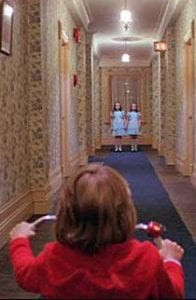In this unit’s summative assessment, we were instructed to chose famous inspirational poems from the internet and annotate from KAMI how and what they did to make their poem inspire. Then we wrote TIEAs for each poem, then finally compared and contrasted it. After that, we had to create, design, and write our own inspirational poem and a dream poem. We had to include poetic devices that matter to the readers. We recorded our voice and face reading the Dream poem we wrote ourselfs and presented our Inspirational Poem in front of the class with a self-made background presentation that goes together with my lines in my poem. Overall, I had a fun time doing this unit because poetry can be soft and hard at the same time and not limited to ideas.
Annotation: Invictus
Annotation: Have You Earned Your Tomorrow
Invictus TIEA
In the poem “Invictus,” by William Ernest Henley uses descriptive language and extravagant metaphors to seek will and courage in the face of a severe test. As Henley uses his own experiences enduring the pain and disease that eventually killed him, he reflects this courage to inspire more people.
“In the fell clutch of circumstance
I have not winced nor cried aloud.
Under the bludgeonings of chance
My head is bloody, but unbowed.” (Stanza 2)
Henley did not lose hope no matter the circumstance, he inspires people to control own fates and decide futures. Henley made lines 1 and 3 Rhyme, alongside with lines 2 and 4 in the stanza, and an alliteration in line 1 by “clutch” and “circumstance.” He was proud of not giving in, proud of what one has achieved despite having suffered great difficulties or losses.
Have You Earned Your Tomorrow TIEA
In the poem “ Have You Earned Your Tomorrow,” Edgar Guest suggest rhyme to a list of questions for people to decide their actions worth each day. The title of the poem isn’t a judgment or warning but a question, just the way it reads.
“Did you waste the day, or lose it, was it well or sorely spent?
Did you leave a trail of kindness or a scar of discontent?
As you close your eyes in slumber do you think that God would say,
You have earned one more tomorrow by the work you did today?” (Stanza 4)
Guest focused on asking questions, and rhyming two lines at a time, lines 1 and 2, lines 3 and 4. He points out small actions in everyday real life, did you do anything while others appreciated? Making others people’s day would make themselves’ too.
Compare TIEA
In both poems “Invictus” written by William Ernest Henley and “Have You Earned Your Tomorrow” by Edward Guest, both authors present poetic devices especially rhyme to inspire people in life to replace missing characteristics in one’s life or thought. The text of both poems conveys the fact that people are in charge of their own fates and decide whether to build the courage to be proud of the tomorrow one’s earned for such actions.
“Beyond this place of wrath and tears
Looms but the Horror of the shade,
And yet the menace of the years
Finds, and shall find, me unafraid.” (Invictus, Stanza 3)
“Is anybody happier because you passed his way?
Does anyone remember that you spoke to him today?
This day is almost over, and its toiling time is through;
Is there anyone to utter now a kindly word of you?”(Have You Earned Your Tomorrow, Stanza 1)
Stanza 3 of “Invictus” states that the world is full of anger and pain that cannot be comprehended, the horror of death that is all the looms afterlife. Henley’s own experiences contracted and sacrificed one and almost two of his legs, but he didn’t give in to the disease, which inspires people with being brave with courage. Henley rhymes lines 1 with 3, and 2 with 4 in the stanza, metaphors in lines 2, 3, 4 of the stanza, which gives complete inspiration to people. Guest completes a list of actions people can ask themselves with a simple goal: “do my actions today deserve me a tomorrow?” this is not a judgment, but a guideline of how people arrange their own actions during one day with the same amount of time everyone’s given. This also inspires people to build the courage to act in life.
Contrast TIEA
In the poem “Invictus,” William Ernest Henley uses mostly descriptive language and extravagant metaphors while “Have You Earned Your Tomorrow,” written by Edgar Guest suggests somehow a rhyme checklist that fits everyone by asking mostly closed questions. While Henley uses his personal life experience, Guest inspires people by asking for valuable matters of people’s actions.
“Out of the night that covers me,
Black as the Pit from pole to pole,
I thank whatever gods may be
For my unconquerable soul.” (Invictus, Stanza 1)
“Is anybody happier because you passed his way?
Does anyone remember that you spoke to him today?
This day is almost over, and its toiling time is through;
Is there anyone to utter now a kindly word of you? (Have You Earned Your Tomorrow, Stanza 1)
Henley’s first lines describe metaphor for the hardships and problems of a worldly existence, then rhymes it with a skipped line, to line 3, in fact, lines 2 and 4 too. Guest simply ask people for their own view of their actions of the day worth it, and rhymes line 1 directly with line 2. Both lines of Guest’s poem is asking questions, it inspires people differently than Henley’s personal experiences while Guest completes a checklist.
Inspirational Poem:
Few years back,
You texted me.
“How you doing?”
Your heart called.
It was a maze,
With no results.
You left for awhile,
Like a bird you flew.
The wind blew against our backs,
The music sound a playback.
You told me again,
Six years past.
I hold you hand,
You hold mine.
Hard work pays,
Six years wait.
Dream Imagery Poem Flipgrid
Password: ms.marcuml&l
Dream Imagery Poem:
My dream feels like marshmallows, fluffy, and sweet.
My dream tasted like sweets and love, wraps around my body.
My dream looks like clouds and sunny days, like in heaven.
My dream smells like tulips, a scent to take you home.
My dream sounds like a rooster, to bring me another day.
My dream is a moment where everything is perfect, and nothing will worry me.



